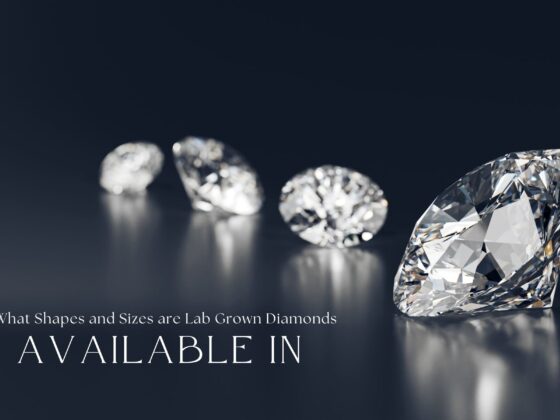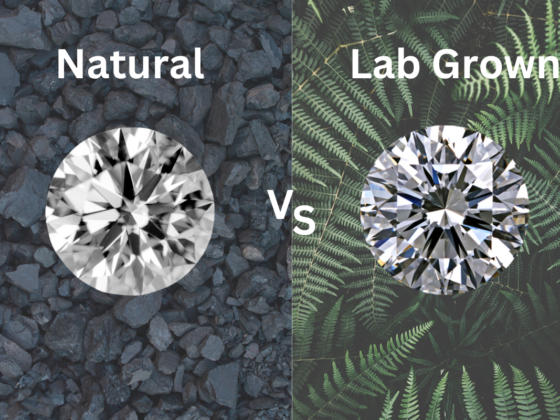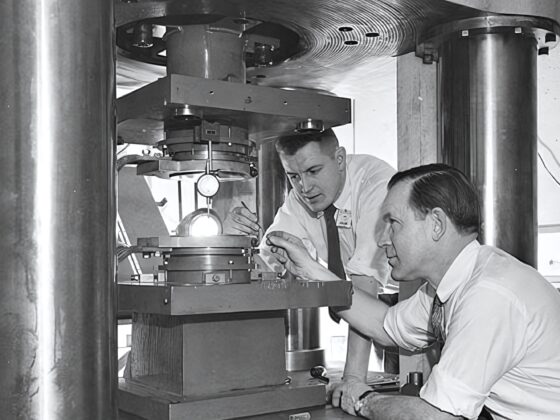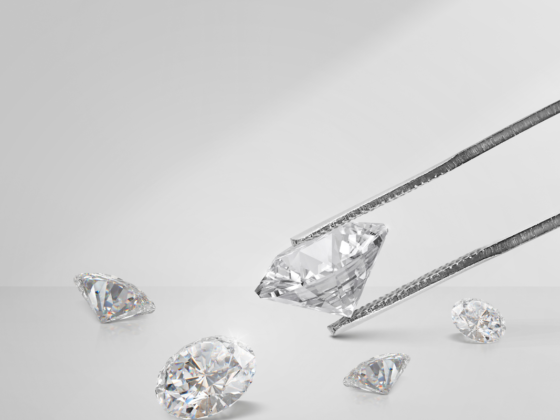In the evolving market of lab-grown diamonds, the choice between GIA and IGI certification presents a nuanced decision for consumers. GIA is often lauded for its rigorous grading standards and esteemed reputation, which can enhance a diamond’s market value and buyer confidence.
Conversely, IGI offers a more accessible certification process at a lower cost, though some question the robustness of its grading. This contrast raises critical considerations regarding trust, budget, and potential resale value—factors that can significantly influence a buyer’s decision. What ultimately drives consumers to favor one certification over the other?
Overview of GIA Certification
The Gemological Institute of America (GIA) certification is widely regarded as a hallmark of quality and reliability in the diamond industry. Established in 1931, the GIA has set rigorous standards for diamond grading, which are recognized globally as the industry standard. The GIA grading system evaluates both natural diamonds vs lab-created diamonds based on the Four Cs: Carat weight, Cut, Color, and Clarity.
This comprehensive approach ensures that each diamond is assessed with utmost precision and consistency according to GIA’s strict grading standards. One of the primary advantages of GIA certification is its emphasis on transparency. Each certified diamond comes with a diamond certificate, which includes a detailed diamond grading report outlining the specific characteristics of the stone, such as color grades and other aspects of diamond quality.
This provides valuable information to consumers and retailers alike. GIA grading is performed by trained gemologists who adhere to strict protocols, guaranteeing that the evaluation process is unbiased and objective. Furthermore, GIA certification extends to lab-created diamonds, affirming that they are graded using the same stringent criteria as natural stones. This commitment to excellence helps consumers make informed purchasing decisions while fostering trust in the marketplace.
Overall, GIA certification represents a commitment to quality and integrity in the diamond industry, ensuring that every diamond meets high standards of authenticity and craftsmanship.
Overview of IGI Certification
The International Gemological Institute (IGI) certification is a significant marker of quality and reliability in the gemstone industry, particularly for those considering IGI-certified diamonds. Renowned for its rigorous approach to diamond grading, IGI caters to both natural and lab-grown stones, providing comprehensive evaluations based on the 4Cs: cut, color, clarity, and carat weight.
This process ensures that each diamond is meticulously examined by skilled gemologists within one of the world’s largest gemological laboratories. IGI’s grading standards are designed to ensure consistency and reliability, offering consumers confidence in their purchases. The IGI diamond certifications include detailed reports that provide insights into the quality of the diamond, such as color grades and other specific metrics.
These IGI reports are essential for buyers, enabling them to make informed decisions based on objective evaluations. Globally recognized as a reputable institution, IGI certification is a trusted choice for those seeking assurance in their diamond investments.
By understanding the IGI certification process and its grading standards, consumers can better appreciate the value of their diamonds and navigate the marketplace with greater certainty. This transparency and reliability make IGI a cornerstone in the diamond certification landscape, enhancing consumer trust and satisfaction.
Key Differences Between IGI vs GIA

When comparing GIA (Gemological Institute of America) and IGI (International Gemological Institute) certifications, several key differences emerge that can significantly impact consumer choices. One of the primary distinctions lies in their grading standards. GIA is known for its rigorous and stringent grading protocols, which are widely regarded as the gold standard in the industry. In contrast, IGI employs slightly more lenient grading practices, which can influence the perceived quality of the diamonds it certifies.
Additionally, the industry reputation of each organization plays a crucial role in consumer perception. GIA’s long-standing history and recognition in the market have cemented its status as a trusted authority in gemology. This reputation often translates to higher market value for GIA-certified diamonds compared to those certified by IGI, which, while respected, does not carry the same weight in the eyes of many consumers.
Ultimately, these differences in grading standards and industry reputation can lead to varying levels of consumer confidence and market value, making it essential for buyers to consider which certification aligns best with their purchasing goals.
Pros and Cons of GIA
How does GIA certification influence consumer confidence in lab diamonds? The Gemological Institute of America (GIA) is renowned for its rigorous grading standards and comprehensive evaluation methods. This prestigious certification enhances consumer trust by providing a reliable guarantee of quality and authenticity. GIA’s commitment to transparency means that buyers can make informed decisions, reinforcing the lab-grown advantages, such as ethical sourcing and environmental sustainability.
One significant advantage of GIA certification is its global recognition. Consumers are more likely to feel secure purchasing a lab-created diamond certified by GIA, knowing that the grading is conducted by experts who adhere to strict protocols. Additionally, GIA’s detailed reports include essential information about cut, color, clarity, and carat weight, allowing consumers to compare diamonds accurately.
However, there are some drawbacks. GIA certification tends to be more expensive than other grading services, potentially increasing the overall cost of the diamond. Furthermore, while GIA is highly respected, some consumers may be less familiar with its grading process compared to more accessible alternatives. Overall, GIA certification remains a strong asset in fostering consumer confidence in laboratory diamonds.
Pros and Cons of IGI
IGI certification is frequently regarded as a viable alternative to GIA, offering its own set of advantages and disadvantages for consumers considering lab-created diamonds. One notable benefit of IGI grading is its comprehensive approach, which evaluates diamonds based on various criteria, including cut, color, clarity, and carat weight. This thorough assessment can provide consumers with a reliable understanding of a diamond’s quality.
However, the IGI reputation is mixed among industry professionals. While many consumers appreciate the accessibility and cost-effectiveness of IGI-graded diamonds, some jewelers argue that IGI grading may be less stringent compared to GIA. This perception can raise concerns about the consistency and reliability of IGI certifications, leading some buyers to prefer GIA for its long-standing reputation for excellence.
Additionally, IGI’s focus on lab-grown diamonds is a double-edged sword. While it caters specifically to this market, it may not carry the same level of prestige as GIA in the broader diamond industry. Ultimately, consumers should weigh the pros and cons of IGI certification carefully, considering both their personal preferences and the implications of grading standards when purchasing lab-created diamonds.
FAQs
What Do GIA and IGI Stand for in Diamond Certification?
GIA stands for Gemological Institute of America, while IGI refers to International Gemological Institute. These organizations provide certification differences in diamond grading standards, ensuring consumers receive reliable assessments of stone quality and authenticity.
How Long Does Certification Take for Each Organization?
The certification timeline varies, typically ranging from a few days to several weeks. Processing delays can occur due to factors such as the volume of submissions and the complexity of the diamond being evaluated.
Are GIA and IGI Certifications Recognized Globally?
Both GIA and IGI certifications enjoy global recognition, with established certification standards that are widely accepted in the jewelry industry. Their reputations contribute significantly to consumer confidence in the quality and authenticity of lab-grown diamonds.
Can I Trust a Diamond With Either Certification?
Trusting a diamond with any certification relies on understanding certification differences and trust factors. Reputable organizations provide detailed assessments, yet consumers should research and verify the credibility of the certifying body to ensure authenticity and quality.
How Do I Verify the Authenticity of a Certification?
To verify certification authenticity, conduct thorough authenticity checks by comparing the certificate number with the issuing authority’s database. Understanding certification differences helps in identifying reputable organizations, ensuring confidence in the diamond’s quality and origins.
Conclusion
In summary, the selection between GIA and IGI certification for lab-grown diamonds hinges on individual priorities, including trust in grading, budgetary constraints, and the significance of resale value. GIA’s esteemed reputation and rigorous standards may appeal to those prioritizing quality and potential market value, while IGI’s more accessible approach offers a cost-effective alternative. Ultimately, careful consideration of these factors will guide consumers in making an informed decision that aligns with their specific needs and preferences.








